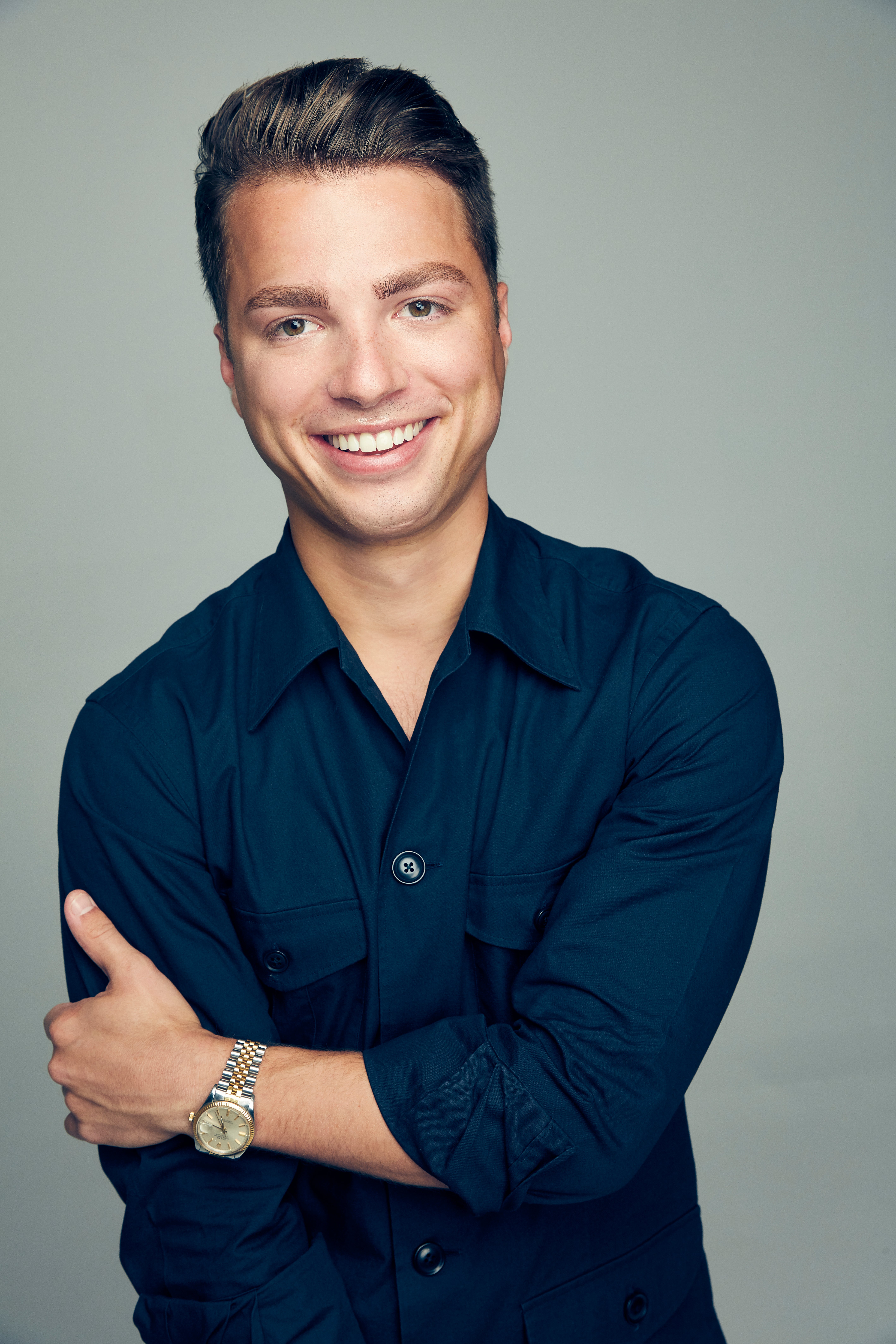Welcome back as we kick off the third year of the 50 States Project, a series of candid conversations with interior designers across the country about how they’ve built their businesses. This week, Birmingham, Alabama–based designer Jeremy D. Clark tells us why honing his process is a “now or never” endeavor, and how a local showhouse netted him two big projects and a higher profile in the local design community.
Do you have early memories of being creative and being drawn to design?
My father was in the homebuilding industry, so seeing that ground-up construction and what it took to create a home and see that come to fruition was extremely inspiring to me. It also opened my eyes to a lot of different paths in the creative world. I went to Auburn University and studied interior design there.
How did getting your design degree shape the way you approach projects today?
So it’s really interesting, because obviously I’m aware that some of the most successful designers—and honestly, some of the most talented ones that I admire—actually didn’t go to school for it. But the thing that I credit school with is learning all the programs: AutoCAD, SketchUp, being able to work with Adobe Suite products to create presentations. When I was starting my business, I didn’t have to outsource any of that because I’d been taught how to do it all, and being able to do everything in-house was really helpful from a cost perspective.
I also learned a lot about things like codes, and having some sort of structure around “Well, this is the reason why we do X, Y and Z.” I didn’t learn pattern mixing or anything like that in the classroom, but I certainly credit school with learning the rules, which has helped me know when it’s appropriate to break them.
I don’t want to pick on design school at all, but I feel like programs are often heavily focused on commercial or hospitality work. Was that your experience, too?
Our program at Auburn was broken down into four different studios: one semester, you would focus on residential design, then commercial, hospitality, and health care—that one I quickly realized was not for me. What was nice about it was how it appealed to a broad range of students. You had the students who hated health care but loved residential and wanted to dip their toes in hospitality, and then vice versa. You’re exposed to a little bit of all of the industry, which was really nice—it was wonderful to be able to see all of the different aspects of it, and it made it easier to seek out an internship or begin our career because we’d had a taste of these different silos in the profession.
Once you graduated, where did you start your professional career?
We were required to have an internship during the summer following the last semester. My internship was at Champalimaud Design in New York, and I absolutely loved it. I was really interested in hospitality design—I still am, and hope to have a hospitality project one day. Then, for a lot of different personal reasons, I needed to be a bit closer to home, so I landed in Nashville at Pencil & Paper Co., with Gen Sohr. I was there for about two years, then worked for Jason Arnold for about eight months. He was amazing, and we certainly left things on wonderful terms, but I had been approached towards the end of my time there with the opportunity that ultimately became my first published project.
Is that when you launched your own firm?
Yes. I knew that if I were to do that project, and do it correctly, that I needed to take the leap of faith. I couldn’t just do it at night and on the weekend; I had to have more time than that. So I said yes to the project, quit my job and started my own company. It was very scary, but in my mind, I don’t have children or an enormous mortgage, so it was kind of the lowest-risk time in my life. I was like, “Well, if it fails,”—which obviously I hoped that it wouldn’t—“I have the least amount to lose.” So I just took the leap of faith, and I’ve been doing it on my own since.
How did you connect with that client for that first project?
It was just a friend of a friend. They knew that I was doing some small side projects and asked if I would be interested. I met the client, who was spectacular—we hit it off and she hired me on the spot. It was clearly a very meant-to-be situation. It was a little too good to be true, but it was perfect. Really the only criteria she gave me, other than a budget, was that she wanted things to feel a little bit more neutral. That was my first project, and then it wound up in Southern Living.

What lessons from the firms you worked for have shaped the way you run your business today?
I was an intern at Champalimaud, so I was very lowly and doing a lot of schlep work, but more than anything, it got me inspired. Alexandra Champalimaud has built such an army of people doing amazing work all over the globe, and they are so successful. When I was with Pencil & Paper Co., it was an interesting point in their time for their business. I was hired for interiors, but then they started shifting away from interiors to be more of a brand-centric social media presence. I learned a lot about the value of marketing. Gen Sohr is crazy-talented, and watching as she was building a brand helped me understand how to market oneself, especially utilizing social media. And then Jason Arnold—he is so good at finishes, hard surfaces and millwork, which, going into that role, I actually considered my weakest link. Just studying all the things that he can do with tile and cabinetry and countertops was fantastic.
What’s interesting is that none of them necessarily had this crazy-stringent process that I was able to take away. So that’s what I’m trying to establish now, while my business is younger, because I feel like that gets lost so easily.
What do you notice is missing when you don’t have that? What’s the pain point in not having that process set in stone?
I had a moment over the summer where I was like, “Oh, my gosh, I have a new employee, and I don’t even know what to tell her to do because I don’t have a process.” But it was also about asking myself, “How do I manage all of this client communication, client expectations, and sending updates?” I’m doing all these things, but if I don’t have due dates and a structure in place, or if I’m not telling clients upfront that they’ll receive an update on all of their items that are shipping every two weeks, or every month—things like that were falling to the wayside.
Client experience is something that I value above all else, but I found that it was very easy to push it to the wayside. When you’re onboarding new clients, working on creative, ordering or working on a furniture plan, at the end of the day, sending someone an update on where their dining room table was just was not at the top of my list. This year in particular, I realized that I can’t grow, and I can’t sustain growth, if I don’t have something for me—and for clients, too—that makes everyone feel more comfortable. Especially as project budgets are growing, people's expectations also grow, as they should. Now I’m like, “I’ve got to do it. It’s kind of a now or never thing.” So I’ve just been trying to work on what that looks like.
What do you think that process is going to be?
I’m looking at how I do things now and what is the natural sequence of events in a project. But then trying to pin them down—“This phase is ‘design development,’ and it typically takes this amount of time”—and put it on paper. I feel like I’ve had it in my mind for the past few years, but now I need it written down, detailed and thorough. I’m really trying to create something that’s concrete so that I can point to it and be like, “This is how we do things at the firm.” I’m not quite there yet, but my goal is to really wrap that up with a bow so that when we come back to the office in January, we’re beginning to implement that.
Does that include a project management system of some sort, or is it more of a checklist? Are you defining your workflow, or also building tools to manage it?
A little bit of all of that. Some of it is fill-in-the-blank form emails that clients can receive so I’m not wasting my time writing the same email in three different ways for three different clients. Especially for things like, “Hey, this is the timeline,” I need to have a template so that I can just fill dates in and send it. And then the tech element is implementing a platform called Monday, which will serve as a project checklist. There are so many things that are constantly changing on any project, and I needed somewhere to be able to quickly have notes, thoughts and to-dos. Other than that, we track everything in a spreadsheet, per project. That will never change, unfortunately. I hate spreadsheets, but I have to do it.
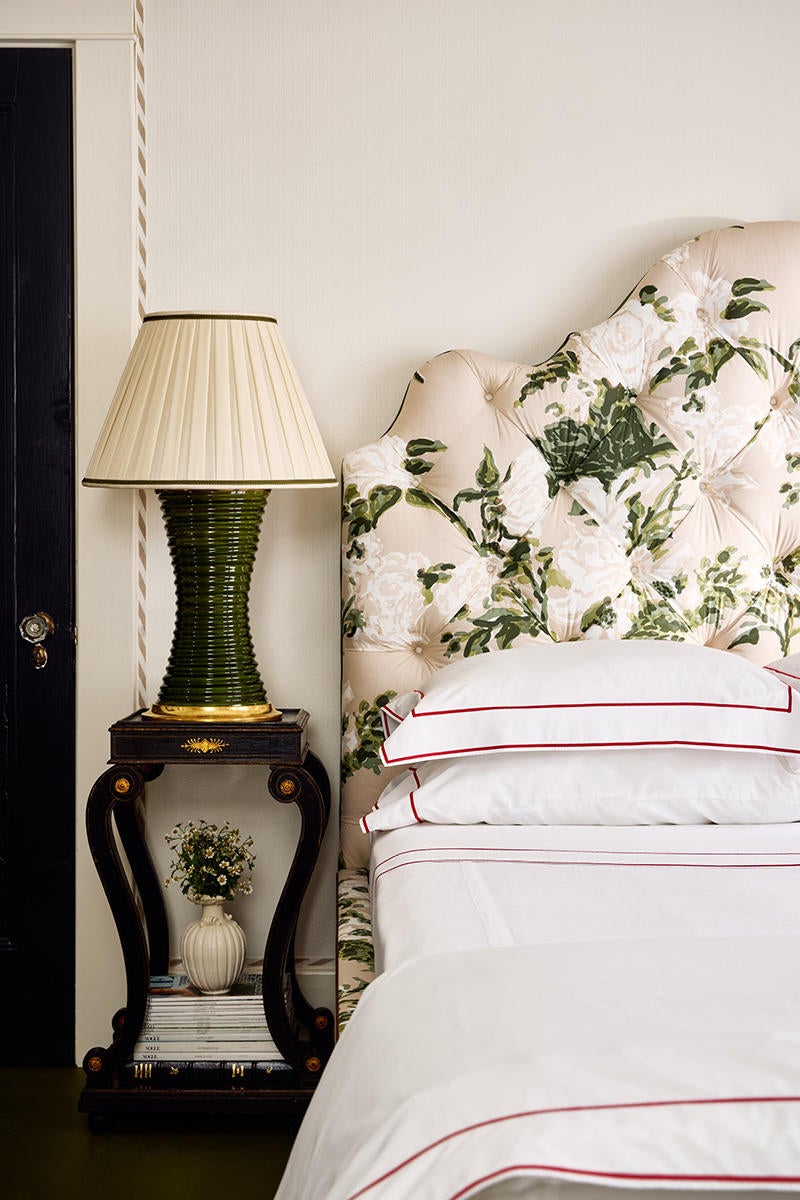
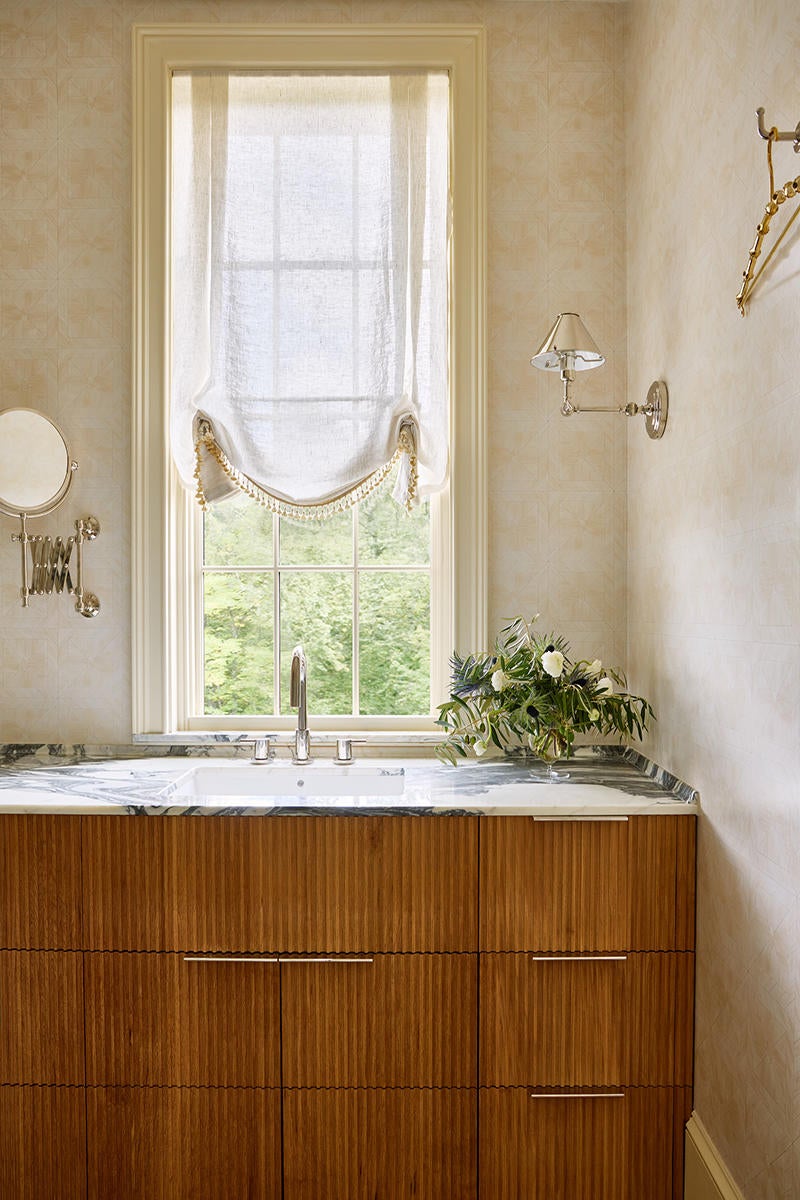
You mentioned that you hired someone over the summer and didn’t know what to do with them, which I think is so powerful and so relatable. Was that your first hire?
Yes.
How did you know you were ready?
Honestly, just the amount of work that was landing on my plate coupled with the lack of time that I had. I reached a point where I was like, “Either I grow, or I have to start saying no to more things.” I didn’t want to do the “no” part, so I hired someone. I needed someone to help me—not even just to do the things that I don’t want to do, but someone who could help me quickly draw furniture plans and order samples. I simply couldn’t do it all, no matter how much I wanted to, and I needed an extra set of hands.
What are the contours of that role?
It’s a design assistant role, so she does a little bit of everything. Whatever I’m doing, she’s probably doing something similar. It’s not super defined yet, which I like, because I don’t want someone to be defined as an “admin assistant.” I’m sure there are a lot of people who love that, but I want someone who’s creative, and I know creatives typically don’t want to be admin assistants. I like the fluidity of it. And now, as I begin to delve into this process part, being able to establish some checks and balances will be really nice in the new year.
One thing that’s been great is the fact that I don’t have to spend as much time in AutoCAD right now, which was eating a lot of my time. I can sketch out an elevation or a floor plan, and she can implement that. That has been the biggest timesaver.
How many projects are you working on?
Right now, it’s at about 12 projects.
Is that too many, too little, or just right?
In full transparency, this upcoming year, I really want to focus on the top-to-bottom. If I’m going to come on board, I’ve got to touch every surface—whether that’s in your room, or your whole home. I feel like the projects we’ve done in the past six months have been that, but the projects before that were more like, “Hey, let’s do something here, here and a little bit here throughout the home.” Those end up being the largest timesuck, and also the least gratifying. No one walks away happy. From a client perspective, they’re spending all this money, but they don’t really feel like anything is finished in the end because they are just buying one piece for this room and one piece for that room. People want that “move that bus” experience from Extreme Home Makeover, and that’s not what they were getting.
That was a huge revelation this past year. My projects are all different in scope, but my goal in the new year is to really start making sure that most of the scopes are similar—not in scale, but in breadth. I want the projects I do to be very holistic approaches and bodies of work. I think everyone ends up happier.
What is your ideal vision of how the firm grows?
It changes every day. But at the end of the day, I’d really love to have a home office in Birmingham and then a satellite office in a larger city that has a design center in it, whether that’s someplace like New York or Texas. I would feel really comfortable being at a 10-person level, doing full homes coast to coast—across the world would be fabulous—and I do hope to eventually break into smaller boutique hospitality projects. That’s something that I have a huge passion for, and I hope that I’m allowed to do that at some point in my career.
I hope that I continue to grow, but at the end of the day, I also just hope that I’m able to hire people who really love being a part of my company and feel invested in and happy with their work. I want to grow, but I want to grow well and continue to have projects that grow in scope while keeping clients happy.
As you do grow, what are the things that you would never want to delegate?
I love building a presentation, so that’s just something I really can’t imagine giving away yet. Second to that is textiles—I absolutely love picking fabrics and patterns, and pulling those together. While I certainly love input and a collaborative effort, that’s something that I don’t think I could ever give away completely.
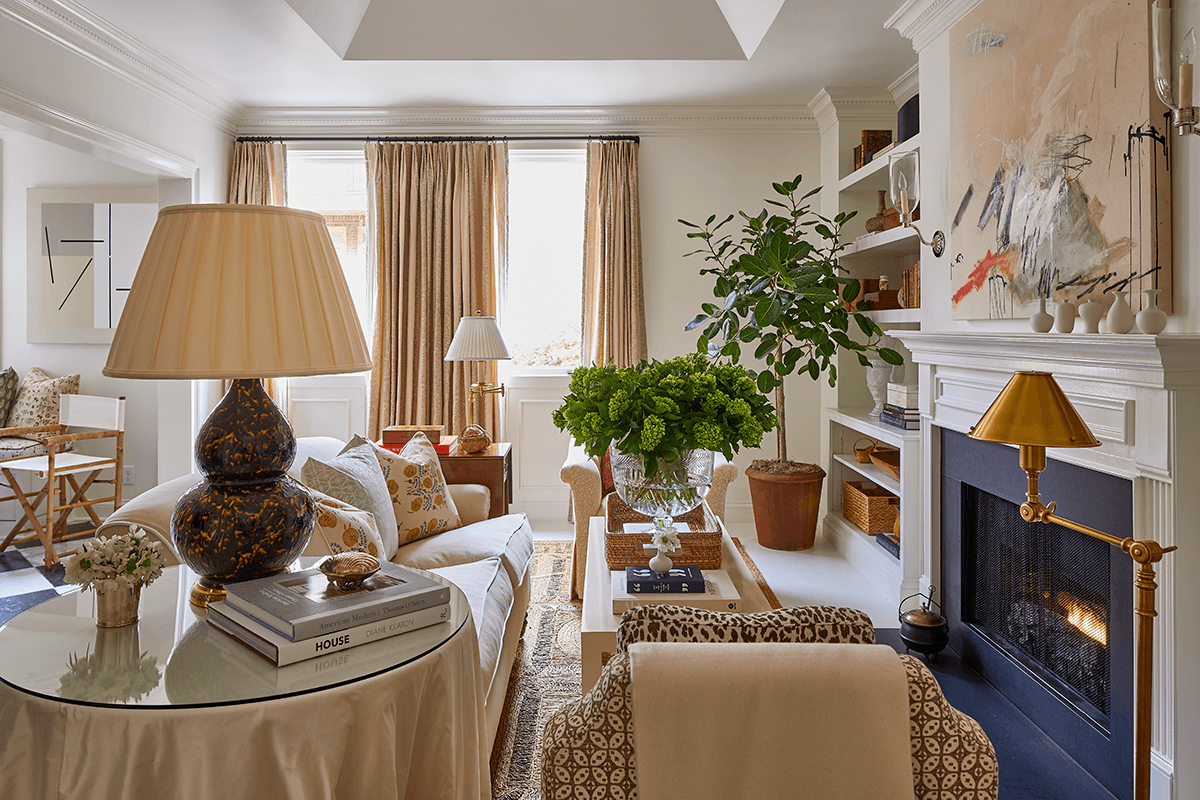
You started your career in Nashville. What brought you to Birmingham?
I was in Nashville, but I was working on projects in Birmingham, and kept getting inquiries from clients there. I had always loved the city, and the more time I spent here, the more charmed I was by it. Plus, I got tired of driving back and forth as more and more opportunities began presenting themselves in Birmingham, so I just decided to do it.
The design community in Birmingham is really quite remarkable in terms of the talent that’s here—architects, designers, and craftsmen as well. There’s such an appreciation for design in this community from a client perspective, as well, because of the talent pool that’s here. When they’re hiring an architect to do their home, it’s kind of a no-brainer for them to hire an interior designer as well, whereas sometimes those links get broken in other cities. Birmingham seems to really nurture design in a way that I haven’t seen other cities do.
What does the housing market look like?
The housing market is so hot, although I think that’s the case in most cities across America—if there’s one offer, there are 17 offers, and someone’s probably showing up with all cash. It’s really wild. The great thing about Birmingham is that there are a lot of older homes, which I love. I’m seeing a lot of renovation projects: Out of the 12 projects that I have, 11 of them are renovations right now. And a lot of them are working within the confines of what they have—they’re not really editing the exterior, but completely gutting the interior. Most of the clients that I have right now are really into keeping the integrity of their home if it’s historic. Plus, not doing an addition has sped up the process for them in the whole journey of renovating a home. For instance, one is a 1921 home, and they just retooled the entire main floor to be more apt for their lifestyle, but they didn’t add on a single square inch.
You mentioned wanting to have a satellite office where there is a design center. What resources are available to you in Birmingham?
In Birmingham, my resources are much more local. There’s not one furniture store that I can go see here—I can’t go somewhere to look at Chaddock and Century, or what have you. There are amazing craftspeople here—my drapery workroom is fantastic, and there’s a great custom furniture maker—but in terms of being able to visit a showroom, that just doesn’t exist.
Do you miss that?
I do, but I also have never totally had that. I mean, in New York, sure, but in Nashville, we didn’t have that either. They had just opened up the Nashville Design Collective when I was leaving. I go to ADAC in Atlanta when I have to pull textiles, and to access a lot of fantastic antique dealers there.

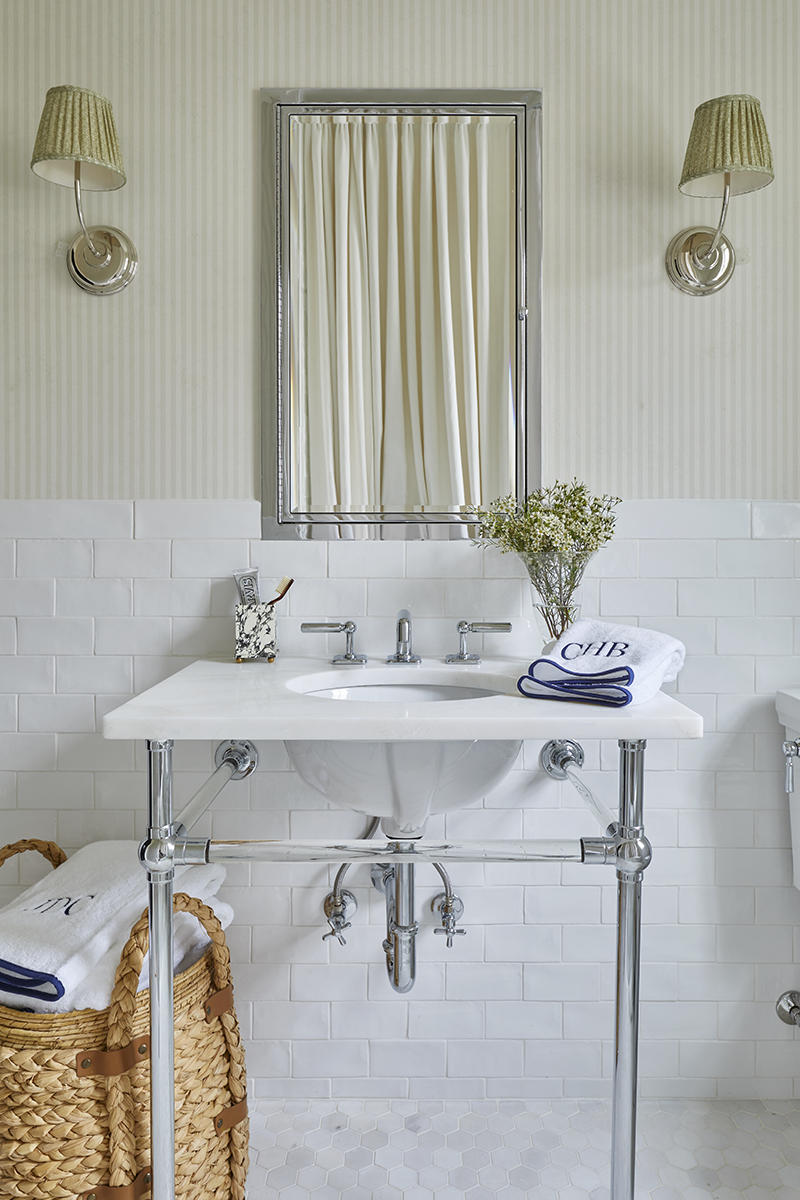
How have you approached billing?
I try to be as completely transparent as possible. I bill on a retainer, which is based on the size and scope of the project. Once [my billable hours have] exhausted the retainer, my fees are billed hourly. I only charge a 20 percent markup, although I’ll probably have to change that to 25 percent in the new year just to become slightly more profitable. But that’s it. I try to keep it as clean and simple as possible, not only for my clients but for me as well.
And the retainer works as a safeguard in case something goes south with the project at the start?
Exactly. If someone were to not purchase anything or not move forward with the project after the presentation, that retainer covers the time spent doing all of the creative work up to that point. After that, what’s billed hourly is more the project management side of things, and the markup on goods allows me to procure the pieces, track all the items and make sure that they arrive and are installed on time.
Are clients pretty familiar with that model, and are they generally comfortable with it?
Honestly, I haven’t really had any pushback. If I’m backing something from a big-box retailer like CB2, they’re always like, “Well, are we going to pay over retail?” Actually, no. In my contract, it states that my markup is 20 percent unless the markup exceeds retail, in which case you would just pay the retail price. That was the only thing that I’ve ever really received questions about, so I’ve just been super forthcoming with that information.
How do you present your contract?
It definitely has evolved. I walk clients through the contract verbally, detailing the cost of it all and how I bill. The rest of it is all the not-fun stuff about things like [all goods being] final sale: “I apologize. I can’t return your custom sofa.” They’ll read over that themselves, but I always explain my fee structure.
As you build out a more firm process, will that shape your contract in some way? And will clients be privy to this new, formalized process?
Ultimately, what I’m trying to develop is [a document that says], “Here’s what to expect.” Obviously, I want it to be chic, but I do think that would help manage their expectations [around] how we work and how we do things. For those who have never worked with a designer before, I think that would be helpful for them as well, to help them understand things like the fact that pricing their project will probably take at least two weeks because there are so many vendors that I have to go to for quotes. People just don’t realize that. So yes, there will be pieces that line up in a contract, but I envision it as a completely different document that’s supplemental material.
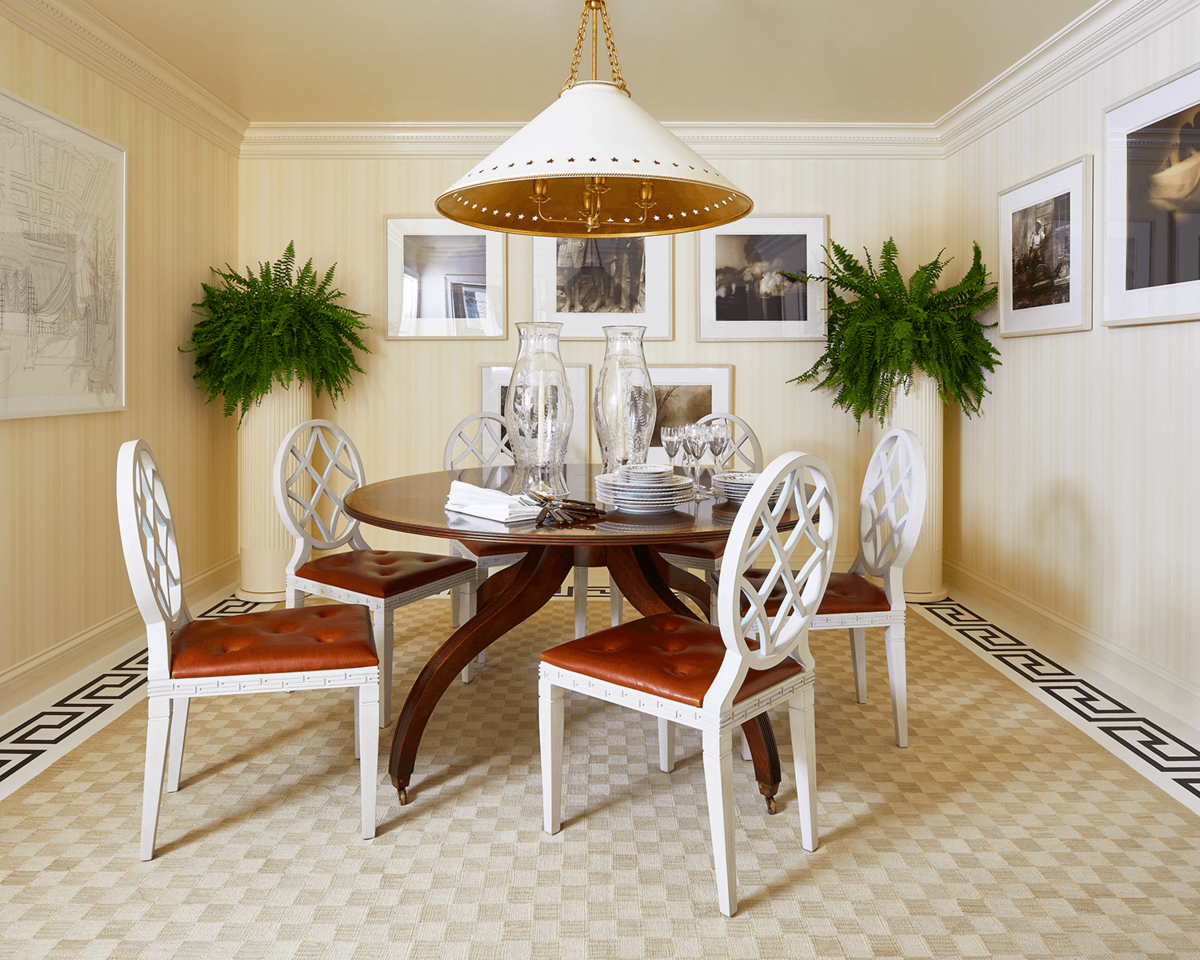
You recently did a room in the Birmingham Home & Garden Inspiration Home. Tell me about that experience.
It was a crazy experience. I’d always wanted to do a showhouse. I think that they’re really fun, and it’s great marketing, but I hadn’t been able to justify the expense quite yet. Then Birmingham Home & Garden [approached me]. It was quite literally in my backyard, so I didn’t have to pay for flights, or for my team to travel. So I said yes, and it was such a fun ride. It was definitely very interesting doing it during COVID, and with all the different supply chain issues. With any project, you have to think on your feet, and that was no different. When we had to pivot, we did. Also, at the end of the day, it was one room—we weren’t building Noah’s ark, you know? My accountant wouldn’t let me do another one, but I would love to.
Was it expensive?
Oh, my God, yes. So what was weird about this one is that you install in August, and then they shoot it for the magazine. Then they have to print the magazine, so the showhouse doesn’t actually open until October. And until then, all of your things are just sitting there. I couldn’t really ask vendors to loan pieces, simply because they couldn’t be without these pieces on the floor for three months—it’s just not realistic—so I had to buy a lot of things. I did have a lot of wonderful people who donated their time. The drapery labor was donated by my workroom, and certain people gave me discounts on things because they realized that it was a showhouse and we would be photographing it. It was expensive, but I would say it was well worth it for me.
Where do all the pieces end up?
A lot of them sold—everything sold except for the bed and two pieces of art—so that was great. The rest has wound up in my house.
As a young designer, it was fantastic exposure for me. Not having a client, I was really able to push the envelope and do something that I probably would not be able to do had it been a family of five. It was really nice to show my chops and [do something] a bit more avant-garde than when you’re designing for everyday life. And the response that I’ve gotten, not only from everyday individuals, but people in the industry, has been really remarkable. It’s something that I’m really grateful for.
What do you mean by that? Is it generating new business, or is it a relationship with vendors?
Honestly, both. I have signed two new clients from the showhouse so far. Those are very exciting projects—one of which is in Key West, and there’s no way that I would have signed them without the momentum and exposure from the showhouse.
From an industry perspective, it’s the reps who have reached out to show new materials, or going into a shop in Birmingham and the owner being able to recognize that that was the room I did and congratulating me. People have been so warm and supportive and receptive of it that I just feel like it established a bit more credibility of what I’m doing, given the fact that my business is two years old, and I’m 26 years old.
You got to do the purest version of you in this showhouse, and then you signed two clients who saw that room and said, “Yes, I want to work with him.” Do those two projects feel different than the other projects you’ve worked on to date?
Yes and no. Yes, in the sense that they are like, “We want something that pushes the envelope.” But no, because one is at the beach, so it definitely isn’t going to be olive green and brown! But there are elements of that room where they’re like, “We want it to be as detailed and thoughtful as this element of the space that you did for the room.” They want all of the detail and layers, but they also want it to be uniquely theirs—which I obviously love because it’s just something different.
One thing you said earlier that really stuck out to me was when you were talking about clients coming for you, and not necessarily like a set aesthetic or style yet. Do you prefer that, or do you want people to eventually look at your work and know that it’s yours?
That is something that I obviously struggle with. I want there to always be something noteworthy, but I don’t ever want to feel like there’s repetition. I want there to be threads throughout that evoke a feeling of a space that I hope that people associate with me. But I don’t want it to feel cookie-cutter, or I have a box of fabrics and I pull from the same box for every project.
What have you learned that you wish you had known at the beginning?
How important a good accountant is—especially one that’s specific to this industry. Our business is so nuanced—you’re dealing with resale, and money is exchanging hands so often. My brain is not built that way, so I wish I would have just bitten the bullet on day one.
How long did it take you to hire an accountant?
When I first started out, I tried to do something online. It was fine. I was able to file my taxes, but it wasn’t cutting it. There were several things that I felt like were missed or not correctly accounted for. So then I used a person—an actual human—and they were great, but not specific to the interiors industry. I realized that I needed someone who really understood the business. Now, I finally have someone who if they ever quit, I will also quit my business because they are my lifeboat.
Has that relationship changed anything about the back of house part of your business?
It’s definitely cleaned up my books. It’s also given me more visibility into my P&L and what I’m actually making versus what I’m spending—all that not-so-fun stuff, but stuff that I desperately need in order to grow and grow sustainably.
To learn more about Jeremy D. Clark, visit his website or find him on Instagram.
















